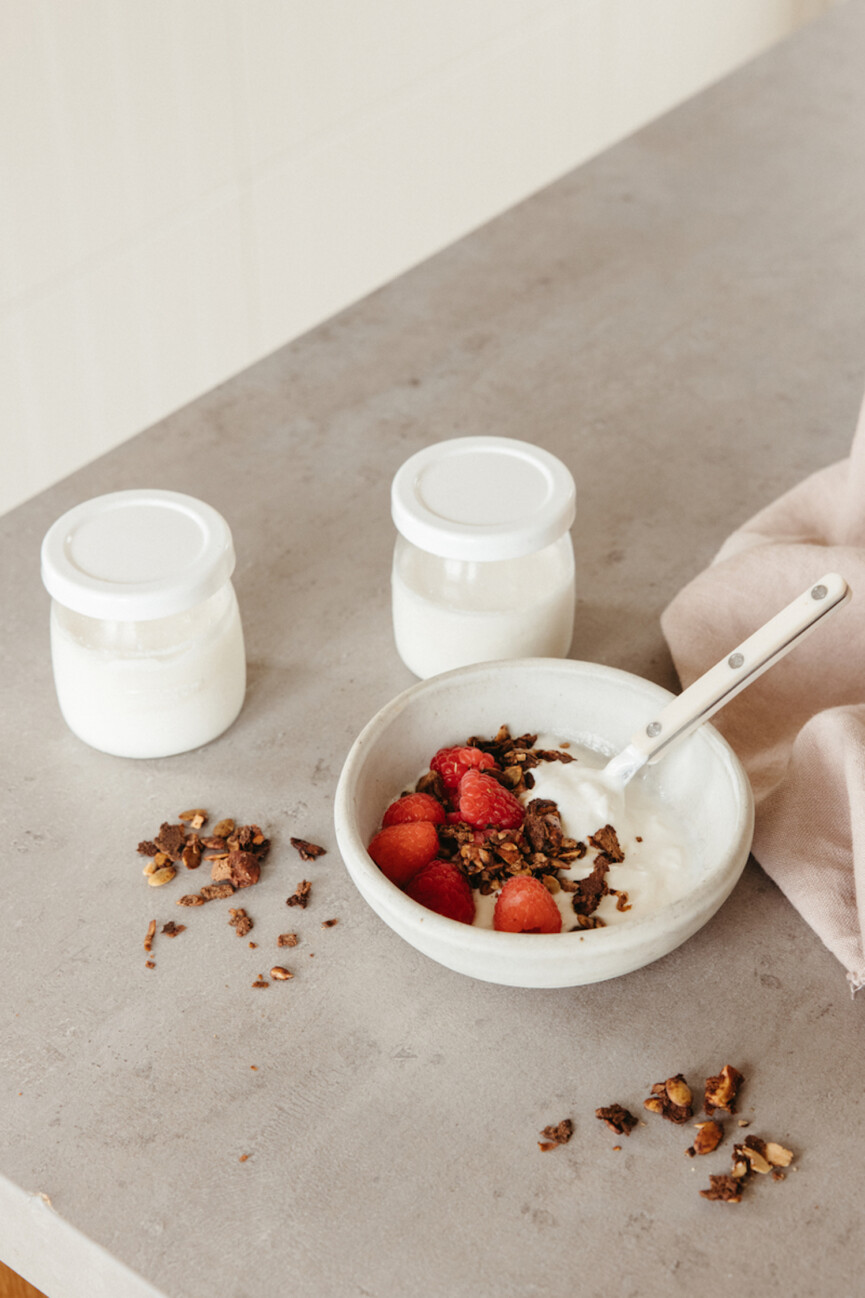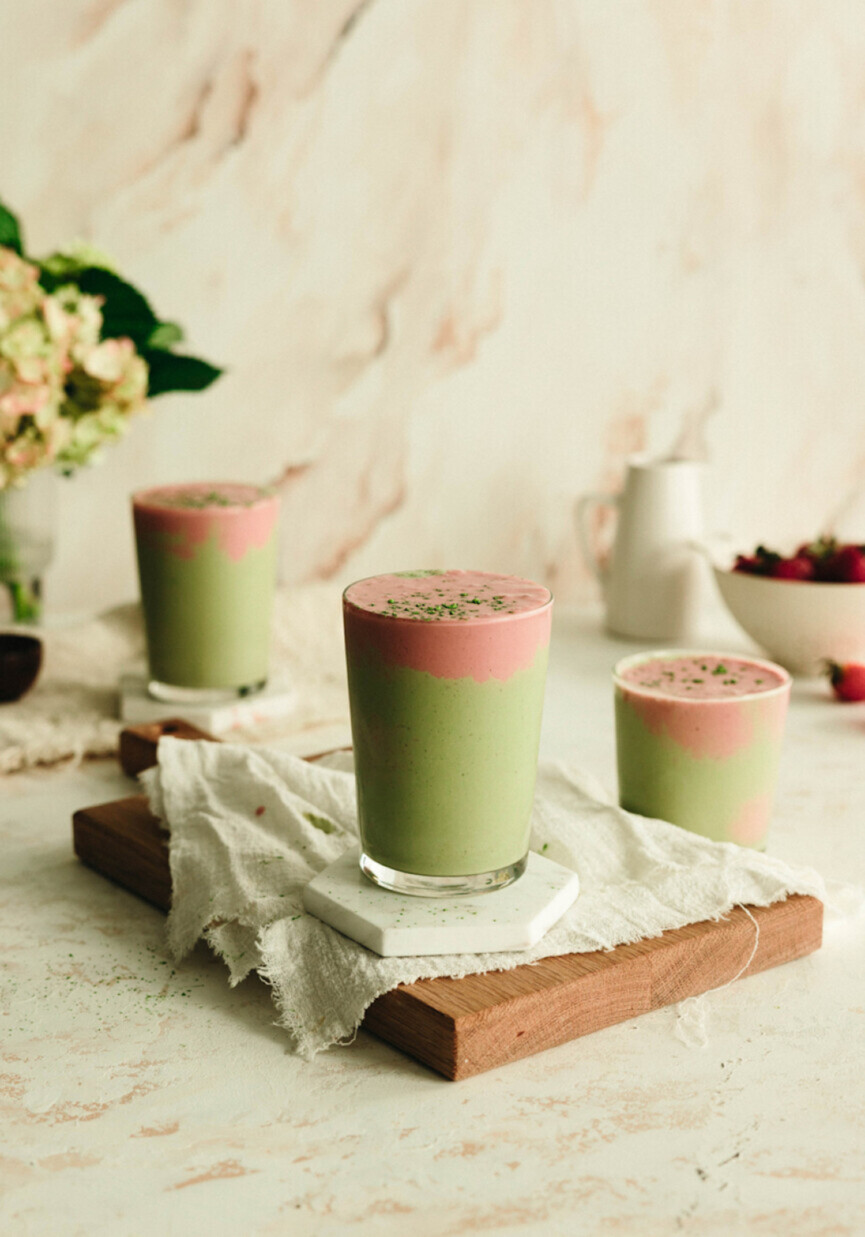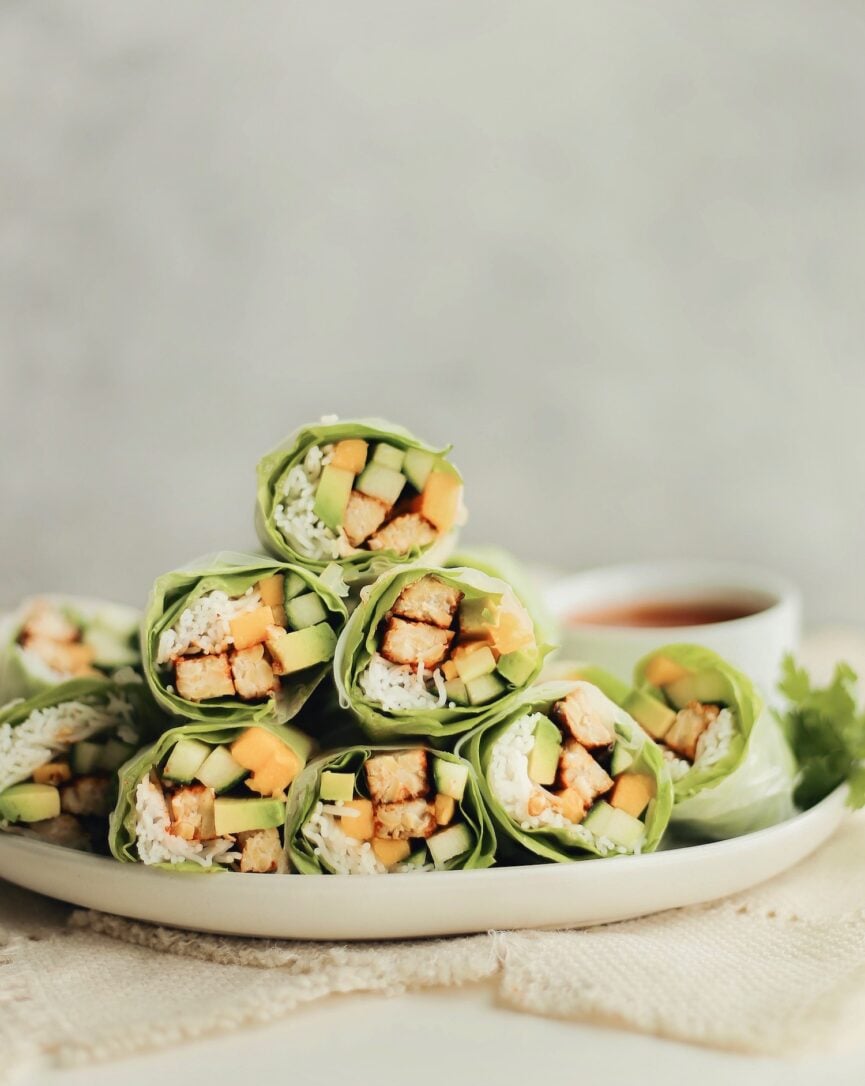Let’s cut right to the chase: if you want a healthy gut, you need probiotics. These tiny (but mighty) beneficial bacteria are the unsung heroes of digestion. They work around the clock to keep your digestive system balanced and operating smoothly. Without ’em, bloating runs rampant. Probiotics are also key for all things nutrient absorption. What’s the best way to maintain these gut-friendly powerhouses? Through probiotic foods. Get the rundown on all things probiotics, including the best natural sources to add to your diet.

Yes, Your Gut Health Matters
It bears repeating: gut health is fundamental to our overall well-being. Our digestive system—home to trillions of microorganisms—keeps our body humming along. If we can’t properly digest and assimilate our food, our organs don’t function. On the flip side, maintaining a healthy gut (via a balanced diet, probiotic foods, and lifestyle choices) can be the difference between robust health and a slew of chronic illnesses. By supporting your gut, you’re also taking care of your mental well-being, immunity, and more.
What are probiotics?
Speaking of supporting your gut, let’s talk about probiotics. After all, the digestive process wouldn’t function without them. Often referred to as “good” or “friendly” bacteria, probiotics help keep our gut healthy. And this is essential for digestion, cognitive function, nutrient absorption, and immune defense. Remarkably powerful, this complex community of microbes resides (naturally) in the body, but we also absorb probiotics from what we eat.

Think of Your Gut as a Garden
Ultimately, probiotics play a critical role in maintaining gut equilibrium. They do this by preventing the overgrowth of harmful bacteria. If you think of your gut as a garden, probiotics are akin to helpful plants. They crowd out weeds (bad bacteria) while promoting a healthy environment. By eating foods rich in probiotics—yogurt, kefir, sauerkraut, etc.—you’re adding more of these good bacteria to your gut. And a well-balanced gut microbiome is truly life-changing. Sayonara, digestive disorders!
How do probiotics work?
They compete with not-so-good bacteria. Thanks to certain substances probiotics produce, they prevent pathogenic microorganisms from taking over. In turn, this creates digestive homeostasis. Additionally, probiotics are known to modulate the immune system. This enhances the body’s ability to swiftly respond to infections and reduce inflammation.
To summarize, there’s a dual action at play: probiotics balance the gut microbiome and boost immune function.

How many probiotics should you have every day—and can you overdose?
This varies. Your needs depend on the type (and strain) of probiotic, as well as any health conditions you have. But generally speaking, most health professionals recommend aiming for at least 1 billion CFUs per day.
Probiotic supplements and probiotic-rich foods contain between 1-10 billion colony-forming units (CFUs) per serving. To put that into perspective, kefir contains 15-20 billion CFUs and yogurt has about six billion CFUs. Overdosing isn’t typically something to worry about. It’s considered safe to consume high amounts of probiotics, especially when obtained from food sources.
However, excessively high doses of probiotic supplements can lead to minor side effects—i.e., gas, bloating, or an upset stomach. Fortunately, these side effects are usually temporary and can be mitigated by gradually increasing your probiotic intake. Chat with your healthcare professional before changing your probiotic routine.

Probiotic Foods vs. Supplements
As mentioned, your daily dose of probiotics comes in two forms: probiotic-rich foods or dietary supplements. But is one a better bang for your buck? Or is a combo the way to go? Based on your dietary preferences, health needs, and lifestyle, the choice is yours. Here’s a breakdown of both:
Probiotic Foods
Benefits:
- Nutrient-rich. Probiotic foods (yogurt, kefir, sauerkraut, kimchi, miso, tempeh, etc.) do double duty. They’re rich in probiotics and provide essential nutrients—like vitamins, minerals, and fiber.
- Natural source. Compared to most supplements, probiotic-rich foods offer a natural and more diverse array of probiotic strains.
- Better absorption. Thanks to the presence of other nutrients, we can better absorb the probiotics we consume.
- Culinary variety. Incorporating probiotic foods (like this homemade yogurt!) is a delicious way to enhance your meals with different flavors and textures.
Drawbacks:
- Taste and preference. Certain probiotic foods have an acquired taste—they’re often tangy and tart.
- Consistency. Whether you travel often or aren’t able to cook a majority of your meals at home, it can be challenging to consume enough probiotic foods (in sufficient amounts) to achieve the desired health benefits.
- Dietary restrictions. If you have any dietary restrictions (i.e., lactose intolerance) it can be harder to include a wide variety of probiotic foods.
Probiotic Supplements
Benefits:
- Convenience. Probiotic supplements are easy to take and can be included in a daily routine— without the need to prep specific foods.
- Controlled dosage. Supplements offer a precise dosage of specific probiotic strains, making it a no-brainer to meet daily requirements.
- Variety of strains. High-quality supplements often contain a blend of multiple strains tailored for specific health benefits (like acne).
Drawbacks:
- Less nutritional value. Unlike probiotic foods, supplements don’t provide additional nutrients, therefore lacking the synergistic effects of food-based probiotics.
- Cost. Probiotic supplements can be expensive, especially high-quality supps with multiple strains and high CFU counts.
- Quality variation. The quality and efficacy of probiotic supplements vary widely between brands. Make sure you’re choosing reputable supplements!
Which are better?
For most of us, a combination of both is the best approach. That way, you can enjoy the nutritional benefits of probiotic foods while using supplements to meet specific health needs (or ensure consistent intake). Of course, if you prefer a more holistic approach, skip the supplements and incorporate as many probiotic foods into your diet that you can. But for sake of convenience—and tailored health goals—consider a probiotic supplement with targeted strains.

8 Probiotic Foods to Include in Your Diet
With an emphasis on using food as medicine, below are popular probiotic foods to use as the base of your meals (or add on the side).
1. Yogurt
One of the most popular foods with probiotics, yogurt is made by fermenting milk with live bacterial cultures. When grocery shopping, opt for plain organic or pasture-raised yogurt. If you don’t respond well to dairy, try A2 yogurt (it’s easier to digest), goat’s milk yogurt (for those sensitive to cow’s milk), or unsweetened coconut yogurt.
Try this: Homemade yogurt and 19 protein-packed Greek yogurt recipes.
2. Kefir
New to kefir? Similar to yogurt, it’s a fermented drink with a thinner consistency. Fun fact, kefir has more probiotics than yogurt and a more diverse range of bacteria and yeasts. Additionally, it’s lactose-friendly. The fermentation process breaks down most of the lactose, which is ideal if you’re lactose intolerant.
Try this: You can sip kefir on its own, toss it into smoothies, or use it as the base for salad dressings.
3. Sauerkraut
Made by fermenting finely chopped cabbage with lactic acid bacteria, sauerkraut is a house fave. It dates back over 2,000 years—to ancient China—where it was originally made with rice wine. While it’s a rich source of probiotics, it also provides a boost of vitamin C. Low in calories but high in fiber, sauerkraut is a healthy and satisfying addition to a variety of savory meals.
Try this: We love topping nourish bowls or layering sandwiches with a healthy spoonful of sauerkraut.

4. Kimchi
Kimchi is another favorite. This traditional Korean dish is made by seasoning and fermenting vegetables (primarily, cabbage and radishes) with chili pepper, garlic, ginger, and other spices.
Try this: Serve it as a side, add it to your favorite rice dish, or use kimchi as a flavor-packed condiment.
5. Miso
Known for its savory umami taste, miso adds depth and richness to soups, marinades, and dressings. Beyond its incredible flavor, miso (Japanese fermented soybean paste) supports digestive health and adds antioxidants to your meals. Miso comes in various types—white, yellow, red—and can be used in both traditional and modern recipes.
Try this: A 30-minute miso pasta recipe is a weeknight, probiotic-rich staple.
6. Pickles (Fermented)
If you think all pickles are created equal, think again. There are actually four distinct types of pickles, each with their own unique flavor and texture—and more importantly, different health benefits. To keep things simple, avoid shelf-stable neon yellow pickles (those that contain Yellow Dye 5—yikes!) which do nothing for gut health. Instead, choose fermented dill pickles. These are made with salt and not vinegar and have a complex umami flavor. This fermentation process means you’re noshing on gut healthy, microbiome-boosting pickles.
Try this: We love pickles as a crunchy snack, but you can also use them to bring texture and punchy flavor to your favorite savory mains.

7. Tempeh
Another fermented soybean product, tempeh has a firm texture and nutty flavor. It’s high in plant-based protein, vitamins, and minerals and supports gut health. You can grill it, stir-fry it, or use tempeh in sandwiches, bowls, and salads. It can even be crumbled to mimic ground beef.
Try this: Honey Sriracha Tempeh Spring Rolls make for a quick and satisfying summer lunch.
8. Buttermilk
Last but not least, buttermilk. Traditional buttermilk is rich in probiotics and is lactose-friendly. It provides essential nutrients—like calcium, vitamin B12, and potassium—and it’s a true culinary delight.
Try this: Buttermilk’s flavor enhances baked goods, marinades, and dressings, adding a probiotic boost to your dishes (and smoothies!).






